Today’s blog post is the twentieth in a series, the transcription of Nimrod Headington’s 1852 journal, Trip to California.
In his journal Nimrod Headington details his 1852 voyage from New York to San Francisco and his search for gold in California. [1] [2]
Nimrod, with several others from Knox County, Ohio, set sail from New York on 16 February 1852, traveling on the clipper ship Racehound. After 5 months at sea, on 18 July 1852, they docked at San Francisco.
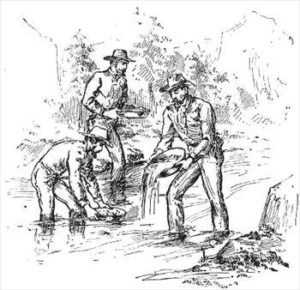 In today’s blog post, Nimrod continues his search for gold in California. It is February 1853, a year since Nimrod left his home and family in Ohio. He has yet to strike it rich. In reality, Nimrod is poorer than when he started his journey.
In today’s blog post, Nimrod continues his search for gold in California. It is February 1853, a year since Nimrod left his home and family in Ohio. He has yet to strike it rich. In reality, Nimrod is poorer than when he started his journey.
Spring 1853
February 1st. This morning McCafferty, Moffitt, and myself went to work washing our dirt, but we had poor luck, only getting ten dollars between us.
February 2nd. One year ago this morning I left my home, and I am as poor as a church mouse. Our occupation today was same as yesterday, but we made better wages. When we panned out, we had made ten dollars and a half each that day.
February 3rd. Still washing at our dirt. There was four of us at work that day. We were working away, all in fine spirits, and everything seemed to be going all right. John McCafferty was at the machine, and the rest of us was shoveling in the dirt. The machine was set down low in the ditch so that it made it very high to throw the tailings out. And about 10 o’clock they began to fall back on him. So I went up to fix so the tailings could not run back on him. I was going to lay a log close to the edge of the bank to prevent it. I went and got the log on my shoulder, carrying it to the place, and when I got onto the gravel, it gave way. And I went down, log and all. I had to throw the log to save myself, and it went end foremost and struck right in the bottom of our riffle box. And in an instant, whatever gold we had was gone. We supposed that we had 30 or 40 dollars in the box and was ready to go to work at noon again. And we got forty dollars that afternoon. This made us feel right nice.
February 4th. We pulled down our dam and moved it up higher, so we did not make anything that day.
February 5th. We went to work again and washed top dirt all day, so we did not make much that day. But we weighed our week’s work and divided it. We had one hundred and twenty-seven dollars apiece. Still feeling better.
Sunday morning. Moffitt and McCafferty started to the Rabbit Creek House for provisions—a distance of 8 miles—but fortunately they met a mule train coming in that they bought flour and cornmeal off. They paid 45 cents for flour and 27 cents for meal and were home again at noon. We then began to think that we were going to live again.
February 7th. Went to work washing dirt again. And there was a company below that commenced work, and they backed the water up on us. So we were about to have trouble with them. But after a little jangling, we got them to fix their race so as to carry the water off. And we had no further trouble. Today a train of 30 mules came in loaded with provisions for sweet and [sour]. Charles Watkins was very sick and Henry went for his brother, who lived in a cabin about a half mile away.
February 8th. We worked hard all day and only got one course between us. And we had to pay ten dollars for water. Another mule train arrived, and now provisions are getting plenty and cheaper—flour 55 cents a lb., cornmeal 45, potatoes, 35, beans, 25, butter $1.25, pork not to be had at any price, rice 35 cents, sugar 37, molasses $3 per gallon.
February 9th. Three of us washed dirt today, and one of us worked for Mr. Cosgrove for $6.00. And we panned out $34. Then add the $6.00 made up $40–$10 apiece.
February 10th. Three of us washed dirt, and one worked by the day as before. We made sixteen dollars and fifty cents apiece for this day’s work, and we began to feel like somebody.
February 11th. Today we got thirty dollars.
February 12th. Worked until noon, and we may go ten dollars.
February 13th. The ditch caved in, and we did not get to wash any [dirt] this day.
February 15th. Today we threw out all of the dirt that had caved into the ditch ad got everything ready to work in the morning. While we were eating supper, Charles Watkins got a letter from his brother who had gone down in the valley some time before, and he wanted to go to him very bad. And I wanted to get rid of him just as bad. And he [badgered] me to buy him out and I made him an offer, and he took me up. So I was rid of him the next morning. Provisions still getting plentiful and cheaper. We could buy flour at 30 cents a lb. Nothing special happened this week, except on Saturday evening. We had a snowstorm, but it did not last long, and the next morning it was clear.
February 20th. Sunday we went to a store where they had a pair of gold scales to divide our dust that we had got in the last 3 days, and we had $46 apiece. The day passed off very pleasantly.
February 21st. Monday morning. Commenced [work] again but had to stop on account of another company that wanted to clean out [their] tail race below us. The race was so narrow that only one could work it at one time.
February 22nd. Jacob Hardaker and myself went out toward the table mountain prospecting, but we found nothing but bear tracks.
February 23rd. Snow fell all day so that all the miners kept indoors all day. [3]
To be continued…
I will post Nimrod’s journal in increments, but not necessarily every week.
[1] Nimrod Headington at the age of 24, set sail from New York in February 1852, bound for San Francisco, California, to join the gold rush and to hopefully make his fortune. The Panama Canal had not been built at that time and he sailed around the tip of South America to reach the California coast. Nimrod Headington kept a diary of his 1852 journey and in 1905 he made a hand-written copy for his daughter Thetis O. Tate. This hand-written copy was eventually passed down to Nimrod’s great-great-granddaughter, Karen (Liffring) Hill (1955-2010). Karen was a book editor and during the last two years of her life she transcribed Nimrod’s journal. Nimrod’s journal, Trip to California, documents his travels between February of 1852 and spring of 1853.
[2] Nimrod Headington (1827-1913) was the son of Nicholas (1790-1856) and Ruth (Phillips) (1794-1865) Headington. He was born in Mt. Vernon, Knox County, Ohio, on 5 August 1827 and married Mary Ann McDonald (1829-1855) in Delaware County, Ohio, in 1849. Nimrod moved to Portland, Jay County, Indiana, by 1860 and during the Civil War served in the 34th Indiana Infantry as a Colonel, Lieutenant Colonel, and Major. Nimrod died 7 January 1913 and is buried in Green Park Cemetery, Portland. Nimrod Headington is my fourth great-granduncle, the brother of my fourth great-grandfather, William Headington (1815-1879).
[3] Nimrod Headington’s journal, transcription, and photos courtesy of Ross Hill, 2019, used with permission.

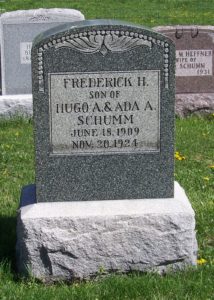
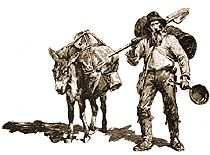
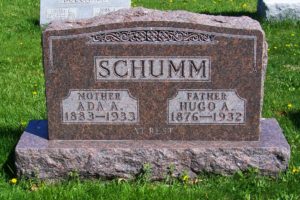
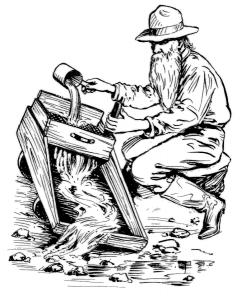
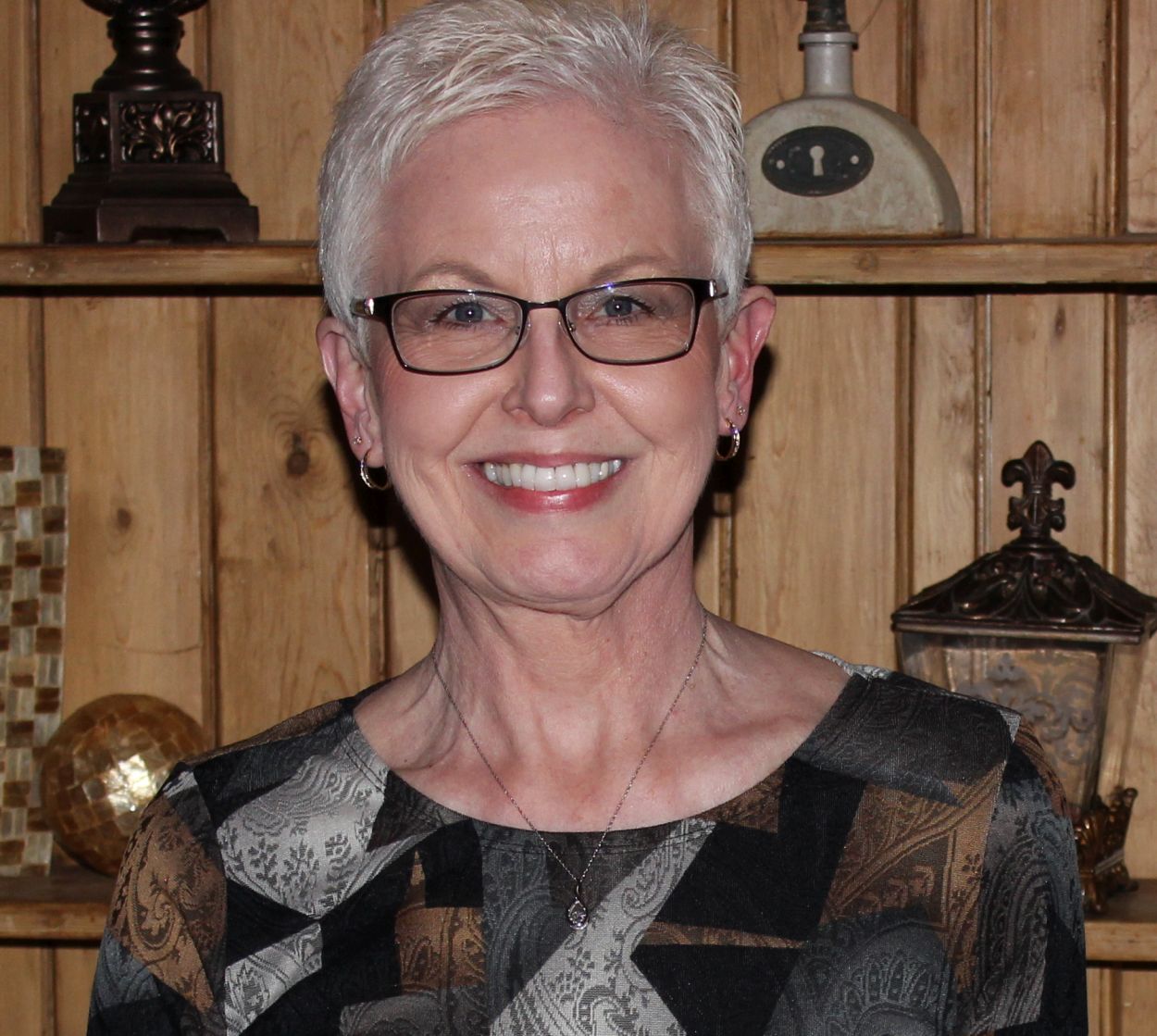



Very interesting and great picture (I had neersee before) of the church! Thanks for sharing this, Karen.
Ha! I see why you say that. Your original surname was probably something similar to Schmitt.
Thank you for letting me know.
I guess he could have picked a worse name lol, Thanks Karen
Thank you. I have since determined this is not one of their five generation photos. Thank you again!